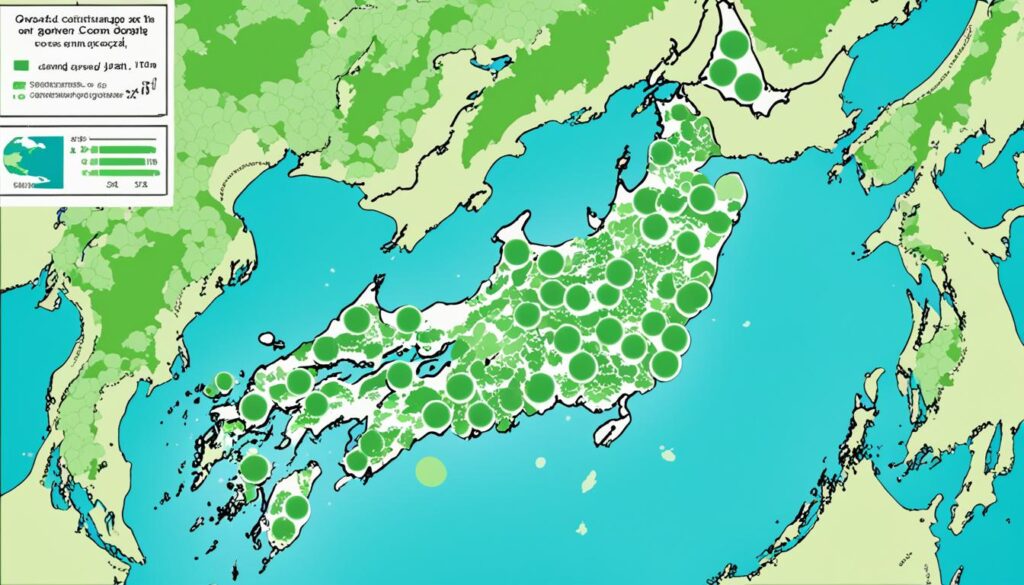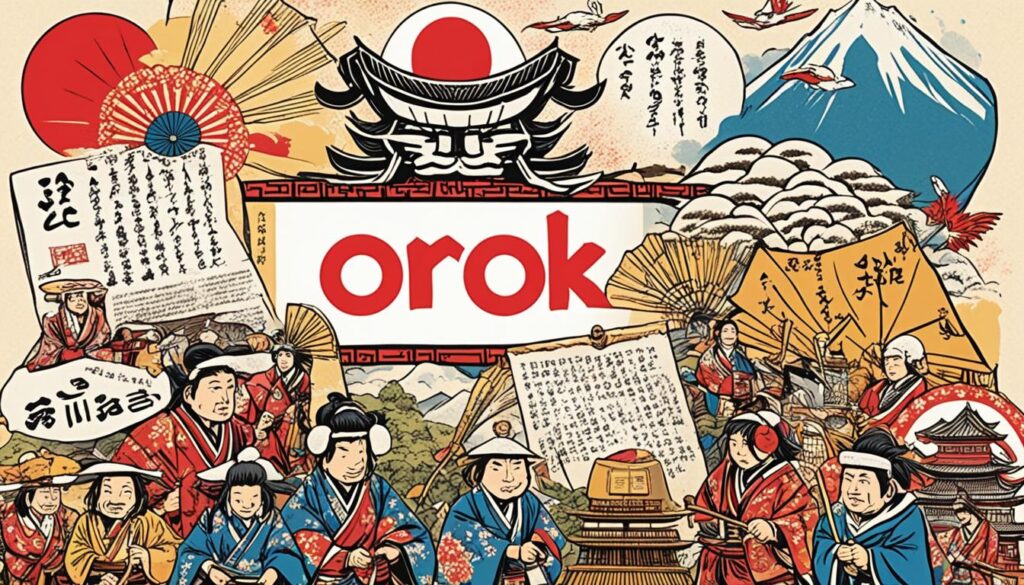In a world of linguistic diversity, it is astonishing to learn that the Orok language, spoken by the Uilta people in Japan, is classified as a critically endangered language by UNESCO. With a dwindling number of native speakers, efforts are being made to revitalize and preserve this unique indigenous linguistic heritage through language documentation and conservation initiatives. Join us as we delve into the rich history, cultural significance, and challenges facing the Orok language and its speakers.
The Uilta People and Their Language
The Uilta people are an indigenous group residing in the Poronaysky and Nogliksky Administrative Divisions of Sakhalin Oblast in Russia. They have a rich cultural heritage and a deep connection to their ancestral lands. The Uilta people are known for their unique language, Orok, which is an integral part of their identity and heritage.
Orok is closely related to the Nanai language and belongs to the southern branch of the Tungusic language family. It is primarily spoken by the Uilta people, with approximately 26-47 native speakers remaining. The Uilta people also have a presence on the island of Hokkaido in Japan, although the number of Orok speakers there is uncertain.
The Uilta people’s language and culture are of great importance not only to their community but also to the preservation of linguistic diversity. With the Orok language being classified as an endangered language, efforts are being made to document, revitalize, and preserve this unique indigenous language for future generations.
Key Details about the Uilta People and Orok Language:
- The Uilta people are an indigenous group in Sakhalin Oblast, Russia.
- Their language, Orok, is closely related to the Nanai language.
- Orok belongs to the southern branch of the Tungusic language family.
- Approximately 26-47 native speakers of Orok remain.
- The Uilta people also have a presence on Hokkaido, Japan.
Through language revitalization efforts and initiatives, the Uilta people strive to ensure the survival and continuity of their indigenous language. This includes documentation, educational programs, and cultural activities that promote the use of Orok among the younger generation.
“Language is an important part of our identity and connects us to our ancestors. Preserving and revitalizing our language is essential for the survival of our culture and the Uilta people as a distinct indigenous group.”
const table = `
Uilta People
Orok Language
Residence
Sakhalin Oblast, Russia
Language Family
Tungusic
Number of Native Speakers
Approximately 26-47
Presence in Hokkaido, Japan
Yes
`;
document.write(table);
Classification and Distribution of Orok Language

The Orok language belongs to the Tungusic language family, specifically the southern branch of Tungusic languages. It is closely related to the Nanai language, which is also spoken in the region. Some classifications include Orok within the “Ulchaic” grouping with the Ulch language and classify it as “Central-Western Tungusic” alongside Nanai.
Orok is divided into two dialects: Poronaisk (southern) and Val-Nogliki (northern). The distribution of the Orok language primarily centers around the Poronaysk and Nogliksk areas on Sakhalin Island, Russia. However, there are also Orok speakers residing in Hokkaido, Japan, although the exact number is uncertain.
Dialect
Location
Poronaisk
Sakhalin Island, Russia
Val-Nogliki
Sakhalin Island, Russia
Poronaisk
Hokkaido, Japan
Val-Nogliki
Hokkaido, Japan
Endangerment and Conservation Efforts
Orok, an endangered language, is facing a critical situation with a dwindling number of native speakers. According to the 2010 census, there were only 26-47 Orok speakers remaining. The urgent need to preserve and revitalize this linguistic treasure has led to the implementation of various language documentation and conservation initiatives.
One significant development in the language preservation efforts occurred in 2007 when the Orok community adopted a version of the Cyrillic alphabet for writing. This adoption facilitates the written documentation and dissemination of the Orok language, aiding in its preservation and accessibility.
An essential tool in the process of language revitalization is the publication of an Orok primer. This primer serves as a foundational resource for language education and literacy, enabling learners to engage with the Orok language and culture. By providing structured lessons, vocabulary, and grammar, the primer supports language learners in their journey to revive and actively use the Orok language.
“Preserving the Orok language is not only about conserving linguistic diversity but also about fostering cultural identity and heritage.” – Language Preservation Organization
The efforts dedicated to the preservation and revitalization of the Orok language demonstrate the community’s commitment to safeguarding their unique linguistic heritage. Through language documentation, the adoption of the Cyrillic alphabet, and the development of an Orok primer, the endangered Orok language is being revitalized and made accessible to future generations.
Endangerment Level
Number of Native Speakers
Year
Critically Endangered
26-47
2010
The Importance of Language Preservation
Preserving endangered languages like Orok is not just about safeguarding linguistic diversity; it is also crucial for the preservation of cultural heritage. Language is intricately intertwined with culture, reflecting unique traditions, beliefs, and ways of life.
Revitalizing the Orok language ensures the survival of the Uilta people’s indigenous culture and identity. It allows them to express their rich historical significance and deep connection with the land they inhabit. As endangered languages disappear, valuable insights into human history, traditional practices, and local knowledge are lost forever.
Language preservation efforts extend beyond the realm of linguistics and embrace wider sociocultural benefits. By promoting and revitalizing the Orok language, the Uilta community contributes to the overall linguistic diversity and serves as a source of inspiration for other indigenous communities facing similar challenges.
Historical Significance and Cultural Heritage
The Orok language holds a deep historical significance as it is intricately tied to the linguistic and cultural heritage of the Uilta people. This language has been the medium of communication and expression within their indigenous culture, reflecting their unique traditions, beliefs, and way of life. Preserving the Orok language not only ensures the survival of a valuable linguistic heritage but also contributes to the overall preservation of Uilta culture and identity.

Throughout history, the Orok language has served as a vessel for transmitting the knowledge, wisdom, and cultural practices of the Uilta people from one generation to the next. It has played a fundamental role in preserving their rich oral traditions, including folktales, mythologies, songs, and rituals.
Indigenous Culture and Language
“Language and culture are intricately intertwined, each acting as a cornerstone for the other. The Orok language serves as a bridge that connects the Uilta people to their ancestral roots, keeping their traditions alive.”
Uilta traditions and customs, deeply embedded in the Orok language, showcase the unique cultural identity of the Uilta people. From traditional art forms to ecological knowledge, the Orok language provides a framework for understanding and interpreting the world through an indigenous lens.
Linguistic Heritage
The Orok language represents an invaluable linguistic heritage, showcasing the intricate grammatical structures, phonetics, and vocabulary specific to the Uilta people. By preserving this linguistic heritage, future generations can access a wealth of knowledge and insights about the Uilta’s past and the evolution of human language itself.
Moreover, the Orok language is a testament to the diverse linguistic landscape of Japan, contributing to the overall linguistic diversity and cultural richness of the country. Each language and dialect adds a unique flavor to Japan’s cultural tapestry and deserves recognition and protection.
Key Points
Summary
Orok language history
The Orok language is deeply rooted in the history of the Uilta people, serving as a medium for their cultural practices and traditions.
Linguistic heritage
The Orok language represents a valuable linguistic heritage, showcasing the unique grammatical structures and phonetics of the Uilta people.
Indigenous culture
The Orok language is intertwined with Uilta traditions, customs, and ecological knowledge, reflecting their unique cultural identity.
Challenges and Future Outlook
The Orok language, classified as critically endangered by UNESCO, faces significant challenges due to its decreasing number of native speakers. This language revitalization journey is crucial in order to preserve the linguistic diversity and cultural heritage represented by the Orok language.
One of the main challenges lies in the threat of language loss, which would result in the assimilation of Orok speakers into dominant languages. This not only leads to a loss of linguistic diversity but also diminishes the cultural identity and heritage of the Uilta people.
Despite these challenges, there is hope for the future of the Orok language. Ongoing efforts by the Uilta people, linguists, and language preservation organizations are dedicated to revitalizing and maintaining the Orok language.
“Language revitalization programs, education, and cultural initiatives play a vital role in the preservation of the Orok language. By empowering native speakers and creating opportunities for language maintenance, we can ensure the survival and continued use of this endangered linguistic treasure,” says Dr. Hiroshi Nakamura, a language preservation expert.
Language revitalization efforts include initiatives such as language documentation, which involves recording and documenting the Orok language to ensure its preservation. Language maintenance efforts focus on education and creating resources to support the teaching and learning of Orok.
Moreover, cultural initiatives that celebrate and promote the Uilta people’s linguistic heritage are essential in fostering a sense of pride and identity among Orok speakers.
Language Revitalization Challenges:
- Decreasing number of native speakers
- Threat of language loss and assimilation into dominant languages
- Limited resources and funding for language revitalization programs
- Linguistic and cultural barriers
- Preservation of traditional Orok vocabulary and expressions
Future Outlook:
The future of the Orok language depends on the collaborative efforts of the Uilta people, linguists, and language preservation organizations. By raising awareness, securing funding, and implementing effective language revitalization strategies, there is hope to reverse the decline of the Orok language and preserve its linguistic diversity for future generations.
Conclusion
In conclusion, the Orok Language is an endangered indigenous language that plays a vital role in preserving the linguistic and cultural heritage of the Uilta people in Sakhalin Oblast, Russia, and Hokkaido, Japan.
Efforts to revitalize and preserve the Orok language are crucial for safeguarding this endangered linguistic heritage. Language documentation, conservation initiatives, and cultural programs are being implemented to protect and revitalize the Orok language, ensuring the survival of the Uilta’s unique linguistic heritage.
Preserving the Orok language is not only important for the Uilta people themselves but also for maintaining the overall diversity of human languages. Indigenous language preservation is essential for promoting linguistic diversity and cultural richness, enhancing our understanding of the world’s linguistic heritage.
Therefore, it is imperative to support ongoing language revitalization efforts and recognize the significance of maintaining the Orok language for future generations. By doing so, we can contribute to the preservation of the Uilta people’s indigenous culture and heritage while celebrating the beauty and diversity of human languages.
FAQ
What is the Orok language?
The Orok language, also known as Uilta, is a critically endangered indigenous language spoken by the Uilta people in the Sakhalin Oblast of Russia and on the island of Hokkaido in Japan.
Who are the Uilta people?
The Uilta people are an indigenous group residing in the Poronaysky and Nogliksky Administrative Divisions of Sakhalin Oblast in Russia. They are the speakers of the Orok language.
How is Orok language classified and distributed?
Orok is classified within the southern branch of the Tungusic languages and is closely related to the Nanai language. It is divided into two dialects: Poronaisk (southern) and Val-Nogliki (northern). The distribution of Orok is centered around the Poronaysk and Nogliksk areas on Sakhalin Island, with some speakers also residing in Hokkaido, Japan.
Is the Orok language endangered?
Yes, the Orok language is classified as a critically endangered language with a decreasing number of native speakers. According to the 2010 census, there were only 26-47 Orok speakers.
What efforts are being made to preserve the Orok language?
Efforts are being made to revitalize and preserve the Orok language through language documentation and conservation initiatives. In 2007, Orok adopted a version of the Cyrillic alphabet for writing, and an Orok primer has been published to support language education and literacy.
Why is the preservation of the Orok language important?
The Orok language holds historical significance as part of the linguistic and cultural heritage of the Uilta people. Preserving the language ensures the survival of a unique indigenous heritage and contributes to the preservation of Uilta culture and identity.
What challenges does the Orok language face?
The Orok language faces challenges due to its critically endangered status and the decreasing number of native speakers. Language loss and assimilation into dominant languages pose significant threats to linguistic diversity and cultural heritage.
What is the future outlook for the Orok language?
Despite the challenges, ongoing efforts by the Uilta people, linguists, and language preservation organizations aim to revitalize and maintain the Orok language through language revitalization programs, education, and cultural initiatives.
Source Links
- https://en.wikipedia.org/wiki/Uilta_language
- https://www.omniglot.com/writing/orok.htm
- https://en.wikipedia.org/wiki/Languages_of_Japan
